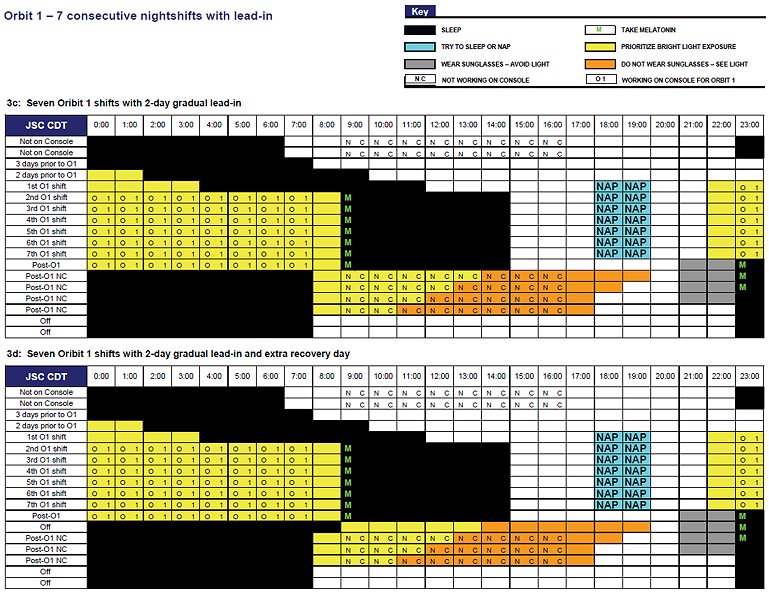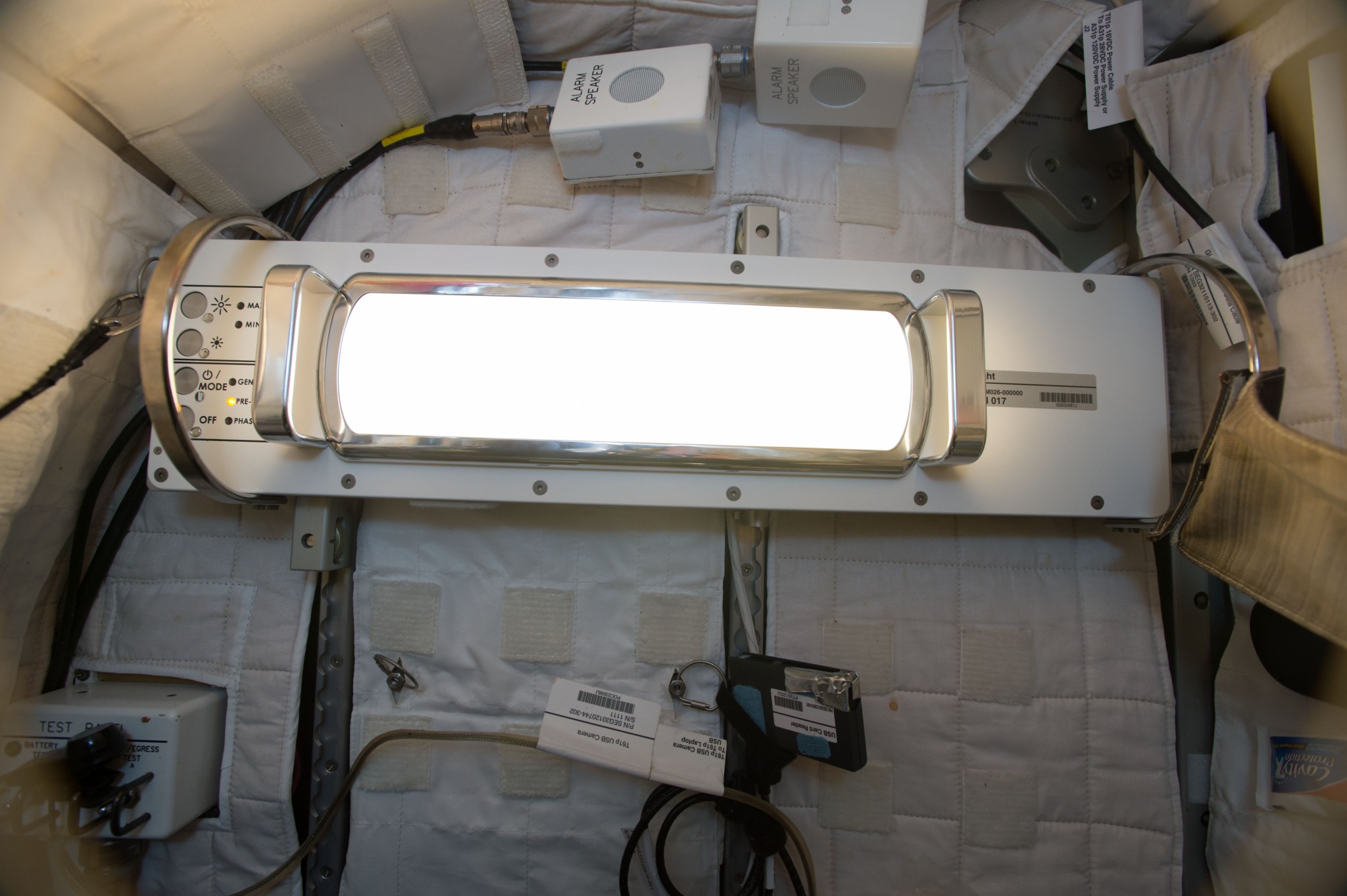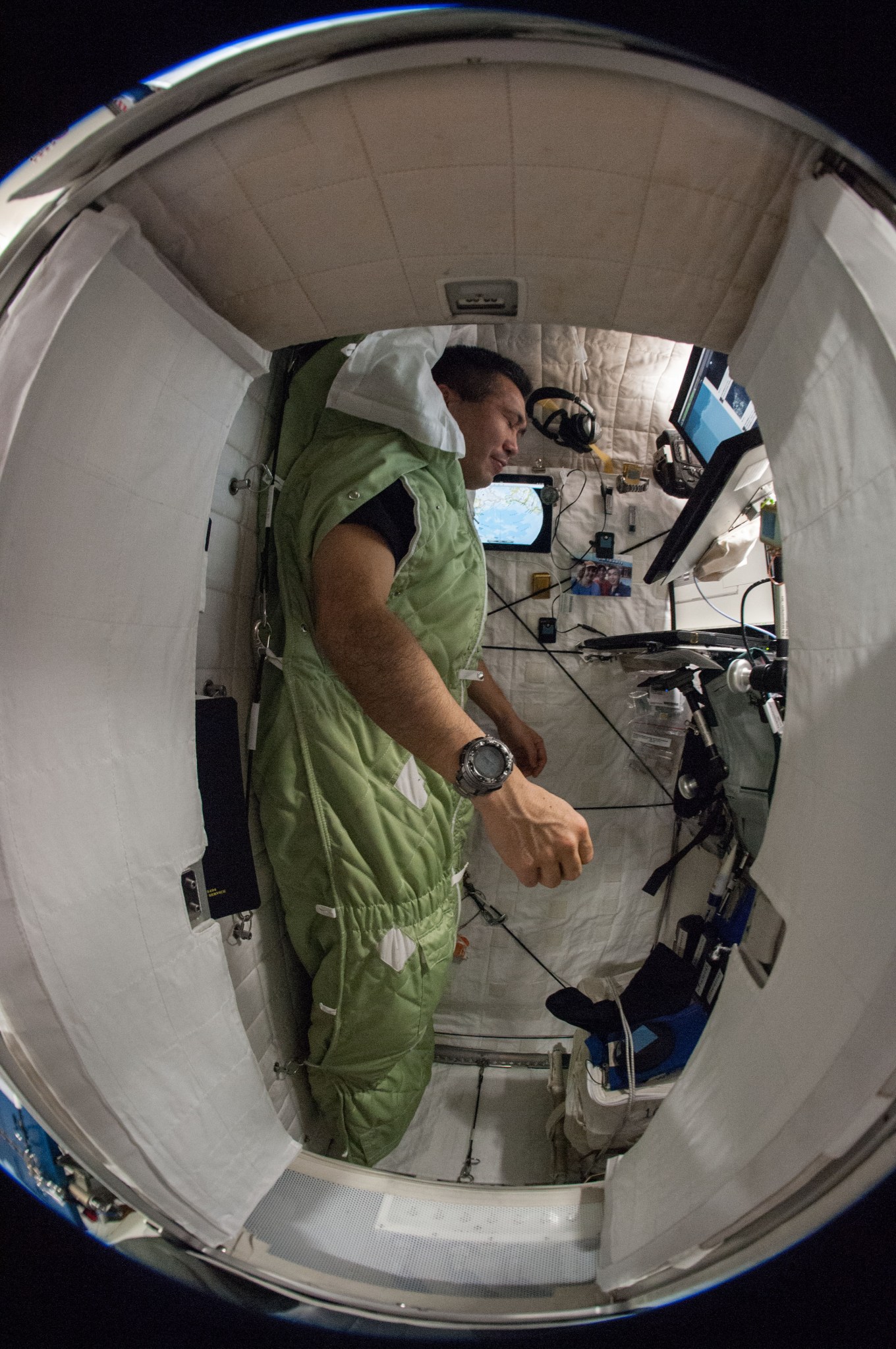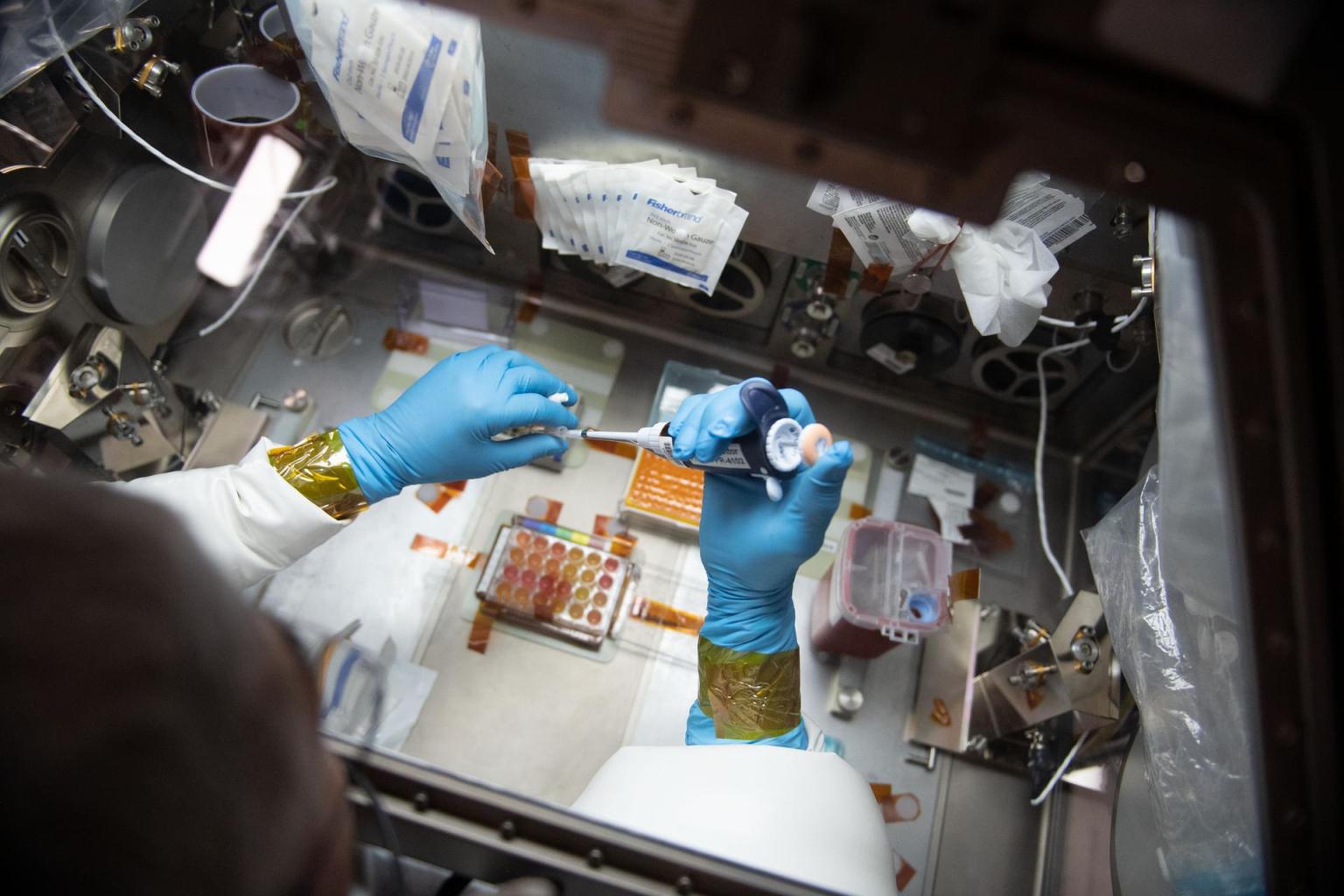Lee esta historia en español aquí.
The hazards of lost sleep can range from on-the-job errors to chronic disease. People all around the world experience disruptions in circadian rhythm, or the body’s natural regulator for sleep and wake cycles based on a 24-hour schedule, every day. This instinctual process can be disrupted by abnormal work schedules, extensive traveling between time zones, and by daily life for International Space Station crew members, who could experience 16 sunrises a day.
Circadian misalignment and sleep deficiency occur during both short- and long-duration spaceflight, and can lead to significant, fatigue-induced errors and long-term sleep loss. In addition to spaceflight, employees working in Mission Control, where shift work and abnormal hours are common, often experience the effects of circadian misalignment. Chronic sleep deprivation and circadian desynchronization are associated with health complications such as metabolic disorders, cardiovascular diseases, gastrointestinal diseases and some types of cancers. NASA’s flight surgeons and scientists have devised tools for crew members and Mission Control employees to help promote a more natural circadian rhythm in space and during shift work back on Earth. Here are seven ways NASA addresses circadian rhythm disruption.

Photo credit: Steven Lockley, Associate Professor of Medicine, Harvard University, Neuroscientist and member of NASA’s Fatigue Management Team and Dr. Smith Johnston, NASA Flight Surgeon, Medical Officer and Lead of NASA’s Fatigue Management Team
- Schedule Sleep and Wake Times
Allowing the body time to prepare for situations where circadian misalignment may occur is the most effective countermeasure against sleep problems like insomnia and fatigue. Developing a schedule that takes into account human circadian rhythm and an individual’s typical sleeping habits is the first tool in ensuring optimal performance, alertness and sleep quality. In addition to noting sleep and wake times, schedules should include lighting instructions, diet, exercise and sleep aid information to ensure proper adaptation. Crew members follow a strict sleep and wake schedule for at least two days leading up to a launch or trainings that require international travel, and continue to follow a sleep schedule during spaceflight. - Sleep Education and Training
Being aware of what factors impact sleep quality and quantity is important for promoting healthy sleep hygiene, or the behaviors, environmental conditions and other sleep-related factors that can affect sleep. Properly-timed exercise, minimizing light from digital devices in the evening, and thoughtful dietary choices can all lead to a better night’s sleep and help to prevent circadian misalignment. - Sleep Environment
Every effort is made to provide space station crew members a sleeping environment that encourages healthy, undisrupted sleep times. Private sleeping quarters like those currently found aboard the station minimize the opportunity for disruption from other crew members and allow for varying sleep schedules. Other environmental factors that affect sleep for crew members aboard the station are temperature, lighting, airflow, noise, carbon dioxide and special restraints used to keep crew members from floating around while sleeping. - Light
The space station orbits Earth every 90 minutes, which means the crew members see 16 sunrises each day. This frequent change from darkness to light severely impacts the body’s ability to adjust to a natural circadian rhythm. To combat this, lighting on the station is being transitioned from General Luminaire Assemblies (GLAs) to Solid-State Light Assemblies (SSLAs). SSLAs allow the crew members to adjust the color spectrum and intensity of the light to promote alertness and circadian resetting, or to promote sleep. Many laboratory investigations have shown that bright lights, when administered appropriately, provide a safe, reversible, non-pharmacological countermeasure to evoke alertness and enhance performance. - Non-prescription Sleep and Alertness Substances
Melatonin and caffeinated products may be used to address circadian rhythm disruptions. Melatonin, a naturally produced hormone that functions to regulate day-night cycles, can help to facilitate circadian shifts during off-normal times. - Sleep Cognitive Behavioral Therapy
Sleep Cognitive Behavioral Therapy (CBT) provides a solution to the random, unwanted thoughts that tend to cloud the mind just before bedtime and lead to the inability to naturally transition to sleep. Sleep CBT techniques help crew members to cope with the day’s events, pre-sleep preparation, adherence to sleep hygiene, engage in structured relaxation and psychological strategies such as cognitive restructuring. Sleep CBT helps crew members to leave undesirable sleep behaviors behind, and replace them with routines and techniques that promote good sleep. - Pharmacologic Interventions
Once a crew member has exhausted the aforementioned options for successful circadian shifting techniques, options for pharmacological interventions are explored. Crew members may use three classes of medication to aid in sleep: chronobiologic, hypnotic and alertness. Prior to spaceflight, flight surgeons conduct ground testing on each crew member to test individual physiological response while using a variety of sleep-aid and alertness medication to ensure the safety and effectiveness of the crew.

Taking steps toward a better night’s sleep, whether on Earth or orbiting almost 250 miles above it, ensures faster response times, sharper cognitive skills, and an overall healthier mind and body. Keep up with the science happening aboard the station by following @ISS_Research.




























